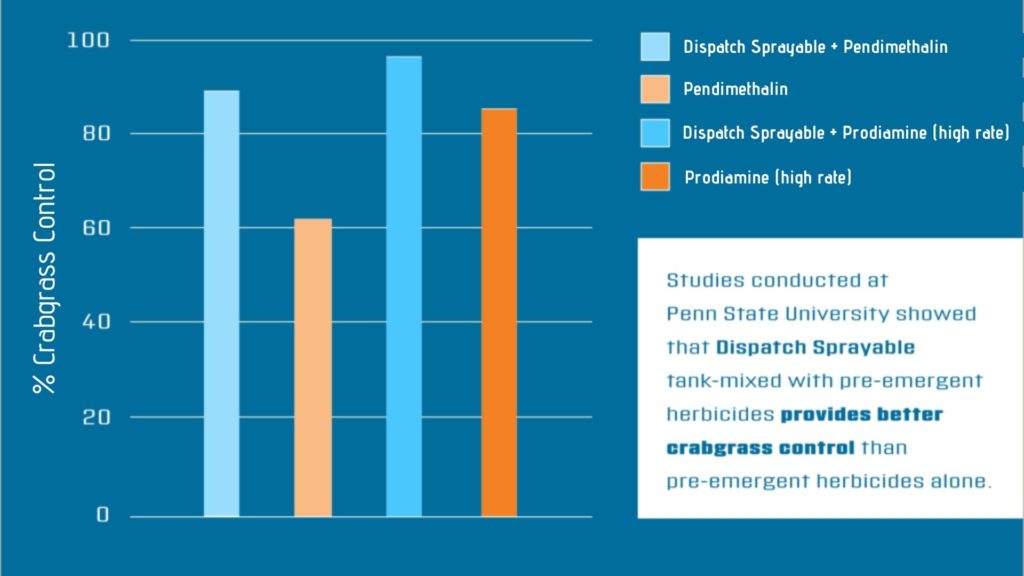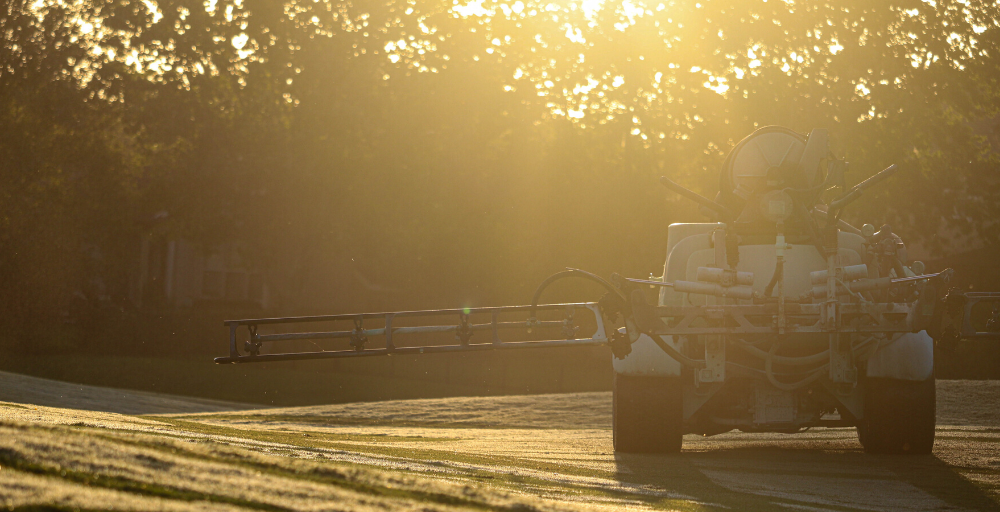Using a pre-emergent herbicide to control weeds on turf can be considered a “no-brainer” for many superintendents. However, there are some additional steps that can be taken to ensure that each pre-emergent application is as beneficial as it can be for a course. A few of those steps revolve around timing, multiple applications, watering-in, and the use of a high-quality soil surfactant.
Timing
Timing is everything in turf management. An early pre-emergent herbicide application is key to staying ahead of problem weeds on your course. By starting your applications prior to the heart of the spring season and before soil temperatures are consistently between 50-55 degrees Fahrenheit, you’re giving the product enough time to move into the soil and become activated by water prior to the start of weed seed germination. This will allow the product to create a shield between the seed and soil before germination, and in turn, make your application more successful.
Multiple Applications
Many things can alter the effectiveness of your pre-emergent herbicide application. Whether it’s excessive heat that causes the chemistry within your application to break down quicker or heavy rains that cause runoff, by doing multiple applications you help to counteract those effects. While not all areas will have challenges like these, creating a split application process can be key for some turf managers to making their pre-emergent applications last throughout the entire season.
Watering-In
A pre-emergent herbicide must reach the soil in order to create a barrier against germinating weed seeds and watering the product in can help you do that.
For Liquid Applications:
On fine turf (cut less than one inch), a very light watering of 0.10 inches is enough to drive the herbicide off the turf blades and into the soil.
On roughs, home lawns and sports fields that are mown at higher heights, 0.25 inches was water is enough.
For Granular Applications:
Granules need enough water to dissolve and release the herbicide. In most cases, a light watering of 0.10 inches of water is sufficient to activate and release the product.
Using a High-Quality Soil Surfactant
Water is nature’s transport system for the delivery of all surface applied fertilizers and chemicals to the rootzone. If infiltration is inhibited, both the water and the soil-directed turf management materials it carries will either sit on the soil surface or run off to a non-target area. This negatively impacts the performance of applied materials, can lead to lower than expected turf quality, and may have a detrimental effect upon the environment.
A high-quality soil surfactant like Dispatch® helps water penetrate into the soil more effectively and more uniformly. By getting water to penetrate immediately into the soil, Dispatch helps place these substances into the rootzone more immediately as well, lessening the opportunity for run-off to non-target areas. When inputs are more efficiently distributed in the rootzone, they can be used by the plant more effectively for consistent turf response across the entire turf area. And because Dispatch helps you use less water, there is less chance of excess water moving these products out of the rootzone before they can do their job.

To learn about other Aquatrols products that can help you on your turf as well as other tips to get your turf ready for the season, read “Spring Turf Ahead”.


Comments are closed.